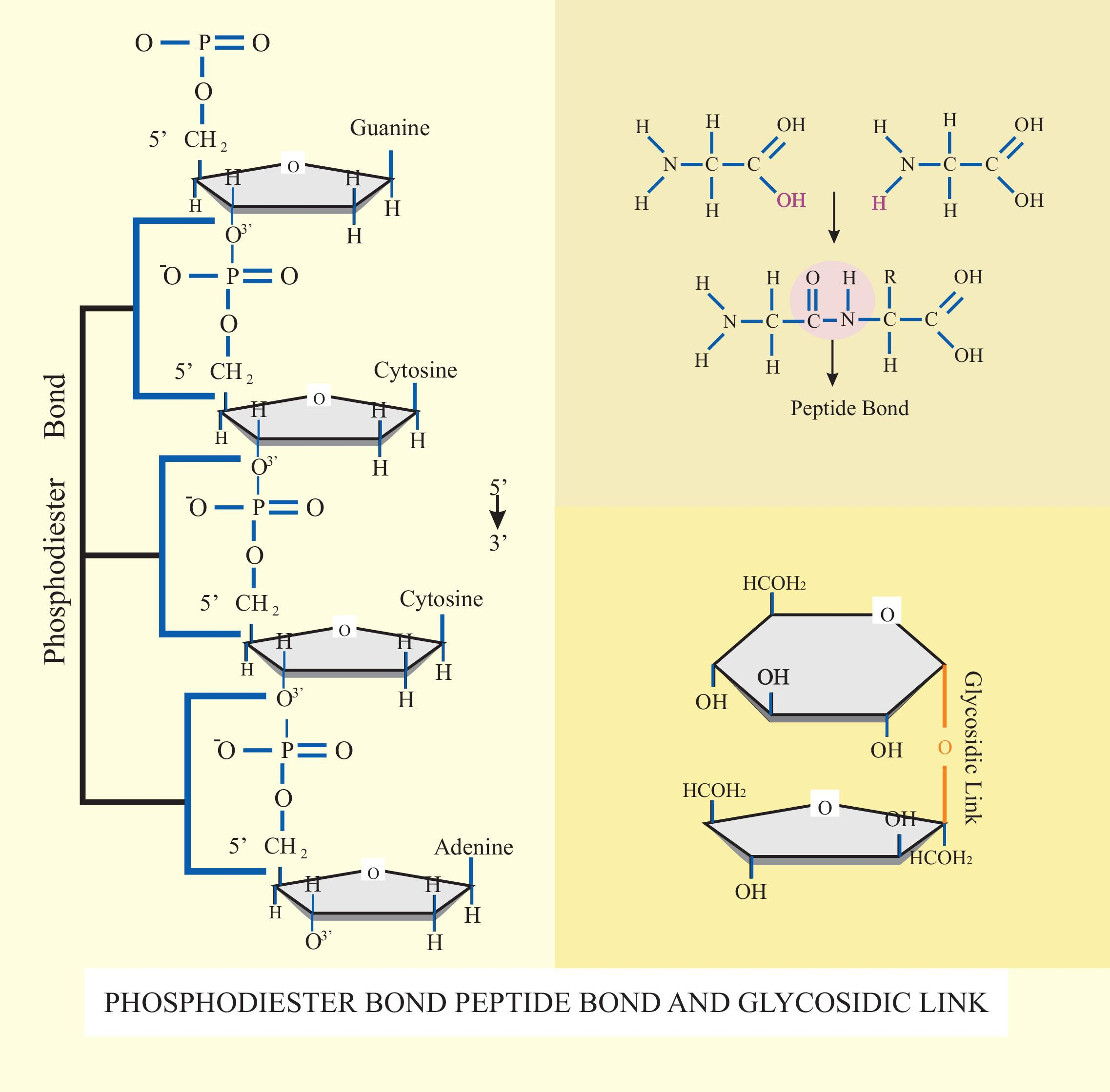
Illustrate a glycosidic, peptide, and phosphodiester bond.
Answer
571.5k+ views
Hint: All these bonds are present between organic compounds and they are necessary for forming all the basic components which support life for all organisms, from single-celled bacteria to multicellular human beings.
Complete answer:
Glycosidic bond: The bond present between the hydroxyl group of certain compounds and groups of saccharide is known as a glycosidic bond.
-These bonds are present in certain inorganic compounds such as the sulfuric acid and any substance which has a glycosidic bond is known as a glycoside.
Peptide bond: Peptide bond is also known as the eupeptide bond which bounds among two peptides or proteins.
-A dipeptide formed through a peptide bond and two amino acids are a type of condensation reaction.
-In organisms, the organisms provide ATP for the formation of a peptide bond which demands energy.
-Phosphodiester bond: Phosphodiester bond is universal to all life forms present on earth because of the backbone of both DNA and RNA.
-By alkaline hydrolysis, the phosphodiester bond inside two ribonucleotides can be broken but deoxyribonucleotides have a better stable linkage in these conditions. All three bonds are found in all the organic compounds present in human beings.

Note: -Phosphodiesterase is an enzyme that catalyzes the hydrolysis of the phosphodiester bond which plays an important role in repairing DNA sequences.
-The nitrogen-carbon linkage present in DNA is glycosidic. Damages or aberrations occurring in the generic content can cause severe genetic related diseases and mutations.
-While the replication of DNA occurs there will be damage to the genetic content which is fixed by phosphodiesterase enzyme.
Complete answer:
Glycosidic bond: The bond present between the hydroxyl group of certain compounds and groups of saccharide is known as a glycosidic bond.
-These bonds are present in certain inorganic compounds such as the sulfuric acid and any substance which has a glycosidic bond is known as a glycoside.
Peptide bond: Peptide bond is also known as the eupeptide bond which bounds among two peptides or proteins.
-A dipeptide formed through a peptide bond and two amino acids are a type of condensation reaction.
-In organisms, the organisms provide ATP for the formation of a peptide bond which demands energy.
-Phosphodiester bond: Phosphodiester bond is universal to all life forms present on earth because of the backbone of both DNA and RNA.
-By alkaline hydrolysis, the phosphodiester bond inside two ribonucleotides can be broken but deoxyribonucleotides have a better stable linkage in these conditions. All three bonds are found in all the organic compounds present in human beings.

Note: -Phosphodiesterase is an enzyme that catalyzes the hydrolysis of the phosphodiester bond which plays an important role in repairing DNA sequences.
-The nitrogen-carbon linkage present in DNA is glycosidic. Damages or aberrations occurring in the generic content can cause severe genetic related diseases and mutations.
-While the replication of DNA occurs there will be damage to the genetic content which is fixed by phosphodiesterase enzyme.
Recently Updated Pages
The number of solutions in x in 02pi for which sqrt class 12 maths CBSE

Write any two methods of preparation of phenol Give class 12 chemistry CBSE

Differentiate between action potential and resting class 12 biology CBSE

Two plane mirrors arranged at right angles to each class 12 physics CBSE

Which of the following molecules is are chiral A I class 12 chemistry CBSE

Name different types of neurons and give one function class 12 biology CBSE

Trending doubts
Which are the Top 10 Largest Countries of the World?

What are the major means of transport Explain each class 12 social science CBSE

Draw a labelled sketch of the human eye class 12 physics CBSE

Differentiate between insitu conservation and exsitu class 12 biology CBSE

The computer jargonwwww stands for Aworld wide web class 12 physics CBSE

State the principle of an ac generator and explain class 12 physics CBSE




